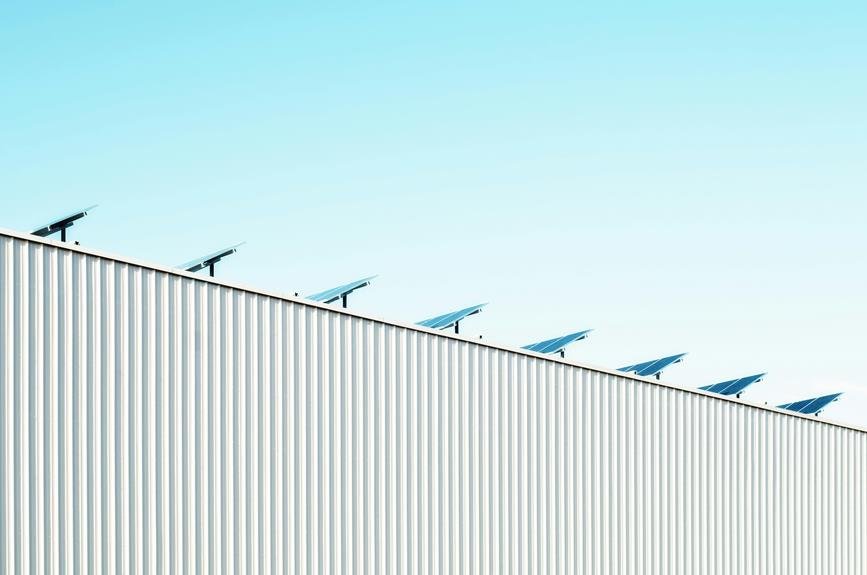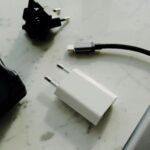You can't bring a 50000mAh power bank on a plane because its watt-hour rating exceeds the standard airline limits. Airlines generally allow power banks up to 100 watt-hours in carry-on luggage, and a 50000mAh power bank typically rates around 185 watt-hours. While some airlines may approve power banks between 100Wh and 160Wh, those over 160Wh are usually prohibited. Always keep power banks in your carry-on, and never in checked baggage. Check with your airline and follow TSA, IATA guidelines for a hassle-free experience. For more specifics on alternative charging solutions and tips, continue exploring further details.
Airline Regulations Overview
When bringing a 50000mAh power bank on a plane, understanding the airline regulations that govern the transport of lithium-ion batteries is crucial. Airlines have specific rules designed to uphold the safety of all passengers. Most airlines allow lithium-ion batteries in carry-on luggage but not in checked baggage due to fire risk. This means your power bank must stay with you in the cabin.
You'll need to be prepared for airport security screenings. Security personnel may need to inspect your power bank, so make sure it's easily accessible. To expedite the process, consider placing it in a bin separately, similar to how you would handle a laptop.
Additionally, familiarize yourself with the charging options available on your flight. Some airlines offer USB ports or power outlets, but not all do. Knowing this beforehand can help you plan your power usage more efficiently. Remember, the power bank should be in good condition, without any signs of damage, to avoid complications during security checks.
Regulations can vary between airlines and countries, so always check with your airline before traveling. Being well-informed ensures a smoother travel experience and keeps your devices charged safely.
Power Bank Capacity Limits
You're likely aware that airlines have specific regulations concerning power bank capacities. According to most airline policies, power banks with a capacity over 100 watt-hours (Wh) or approximately 27,000mAh are generally prohibited in carry-on luggage. This stems from restrictions on lithium-ion batteries to guarantee passenger safety and prevent potential hazards.
Airline Regulations Overview
Understanding airline regulations for power banks, especially those with a high capacity like a 50000mAh unit, requires comprehending specific capacity limits and safety guidelines set by aviation authorities. The TSA guidelines indicate that power banks are considered portable chargers and must comply with certain restrictions when it comes to their watt-hour (Wh) rating. The majority of airlines allow power banks up to 100Wh without prior approval, while those between 100Wh and 160Wh may be allowed with airline approval. Power banks exceeding 160Wh are typically prohibited.
Airline restrictions on portable chargers are primarily focused on safety concerns, given that lithium-ion batteries can pose fire risks. It's vital to check the watt-hour rating of your power bank, which can be calculated by multiplying the voltage (V) by the ampere-hours (Ah). For instance, a 50000mAh power bank at 3.7V equates to 185Wh, well above the standard allowance without special permission.
Lithium-Ion Battery Restrictions
Given the strict airline regulations, it's crucial to understand the specific capacity limits imposed on lithium-ion batteries within power banks, especially high-capacity units like a 50000mAh model. Most airlines adhere to guidelines set by the International Air Transport Association (IATA), which state that lithium-ion batteries with a capacity greater than 100 watt-hours (Wh) are subject to stringent travel restrictions.
To determine if your 50000mAh power bank complies, you need to convert the battery capacity from milliampere-hours (mAh) to watt-hours (Wh). You can do this by multiplying the mAh by the voltage (V) and then dividing by 1000. For a typical 3.7V power bank, a 50000mAh unit equates to 185Wh, which significantly exceeds the 100Wh limit.
Airlines typically allow you to carry power banks with a capacity of up to 100Wh in your carry-on bag without prior approval. For capacities between 100Wh and 160Wh, you may be able to carry them with the airline's consent, but anything above 160Wh, including your 50000mAh power bank, is generally prohibited. Always check with your airline for their specific policies to ensure compliance and a stress-free journey.
Lithium-Ion Battery Restrictions
When traveling by air, it's crucial to be aware of the strict regulations concerning lithium-ion batteries, particularly high-capacity ones like a 50000mAh power bank. The main concern revolves around the power bank size and its potential risks. Lithium-ion batteries are recognized for their energy density, which can present safety hazards if not properly managed. As a result, airlines enforce rigorous guidelines to minimize these risks.
Airline restrictions typically focus on the watt-hour (Wh) rating of the battery, rather than its milliamp-hour (mAh) rating. To convert mAh to Wh, you can use the formula: (mAh)*(V)/1000 = (Wh). Most high-capacity power banks, like a 50000mAh one, surpass the 100Wh limit, requiring special permission from the airline or outright prohibition of their carriage.
The International Air Transport Association (IATA) establishes a general guideline, but individual airlines may have more strict rules. Always check your specific airline's restrictions on lithium-ion batteries before traveling. Adhering to these regulations guarantees your freedom to travel without unnecessary delays or confiscations. Disregarding these rules could lead to your power bank being confiscated or, even worse, fines and other penalties.
Carry-On Vs. Checked Baggage
You must carry power banks, including high-capacity ones like a 50000mAh model, in your carry-on baggage, as airlines prohibit them in checked luggage due to fire safety concerns. This rule stems from the potential risks lithium-ion batteries pose if they overheat or short-circuit. Carrying them in your carry-on allows the cabin crew to address any issues immediately.
When considering a 50000mAh power bank, you should be aware of specific weight restrictions and size limitations set by airlines. These regulations guarantee everything fits safely in overhead bins or under seats. Typically, airlines allow power banks up to 100Wh (Watt-hours), but you can carry higher capacities with airline approval.
Here's a quick reference table:
| Category | Carry-On Baggage | Checked Baggage |
|---|---|---|
| Power Bank | Permitted | Prohibited |
| Weight Restrictions | Must adhere | Not applicable |
| Size Limitations | Must fit in cabin | Not applicable |
Safety Precautions
When bringing a 50000MAH power bank on a plane, you'll need to follow strict lithium battery regulations set by aviation authorities. Each airline may have specific guidelines, so it is important to check with your carrier beforehand. Additionally, safe storage practices, such as keeping the power bank in your carry-on and ensuring it is switched off, are vital to prevent any potential hazards.
Lithium Battery Regulations
Airlines adhere to strict regulations regarding lithium batteries to mitigate risks like overheating and potential fire hazards. When considering bringing a 50000MAH power bank on a plane, you need to be aware of the battery capacity and travel restrictions. Regulations typically limit the watt-hours (Wh) of lithium batteries you can bring onboard. For context, a 50000MAH power bank with a voltage of 3.7V translates to 185Wh, which usually exceeds the allowable limit.
To guarantee your journey remains hassle-free, here are some vital safety measures and charging alternatives:
- Check Battery Capacity Limits: Most airlines allow batteries up to 100Wh without special permission.
- Carry-on Only: Lithium batteries must be carried in your hand luggage, not checked baggage.
- Protection Against Short Circuits: Use protective covers or place each battery in a separate plastic bag.
- Alternative Charging Options: Consider smaller power banks or airline-approved charging stations.
These steps are essential for your safety and the safety of others onboard. Always verify the specific regulations of your airline to avoid any last-minute surprises. It's all about balancing your need for power with the airline's safety protocols.
Airline Specific Guidelines
Each airline has specific guidelines and safety precautions regarding the transport of lithium batteries, so it's crucial to review your carrier's regulations before traveling. Airport security measures are stringent when it comes to high-capacity power banks, and different airlines may have varying restrictions. Most airlines allow power banks up to 100Wh without requiring approval, but anything above that often needs special permission.
Here's a quick reference table for some major airlines:
| Airline | Maximum Capacity Allowed | Special Instructions |
|---|---|---|
| Delta Airlines | 100Wh | Approval needed for 100-160Wh |
| American Airlines | 100Wh | Must be in carry-on luggage |
| United Airlines | 100Wh | 2 spares allowed in carry-on |
| British Airways | 100Wh | Approval needed for 100-160Wh |
| Emirates | 100Wh | No more than two batteries above 100Wh |
Power bank brands like Anker, RAVPower, and Mophie often list the watt-hour rating on the device or packaging, helping you comply with these regulations. Remember, failing to follow airline-specific guidelines can result in your power bank being confiscated by airport security. Always double-check with your airline and be prepared to demonstrate compliance to enjoy a hassle-free travel experience.
Safe Storage Practices
Securing your 50000MAH power bank is safely stored during travel involves following specific safety precautions to prevent fire hazards and comply with airline regulations. When it comes to power bank storage, follow these guidelines to guarantee battery safety and a hassle-free journey.
- Carry in Hand Luggage: Always carry your power bank in your hand luggage, not in checked baggage. This is a regulatory requirement to allow quick access in case of an emergency.
- Use a Protective Case: Store your power bank in a protective case to prevent accidental activation or damage. This reduces the risk of short circuits, which can be a fire hazard.
- Avoid Overcharging: Make sure your power bank is not overcharged before you travel. Overcharging can lead to overheating, which is a significant safety concern.
- Keep Away from Metal Objects: Avoid storing your power bank near metal objects like keys or coins. Metal can cause short circuits if it comes into contact with the battery terminals.
Following these power bank storage practices will enhance battery safety and help you enjoy the freedom of uninterrupted power during your travels. Always stay informed about airline regulations to guarantee a smooth and safe journey.
International Flight Considerations
When planning to bring a 50000mAh power bank on an international flight, understanding the regulations set forth by both the departure and destination countries, as well as the airline's specific policies regarding lithium-ion batteries, is crucial. TSA regulations, for example, allow lithium-ion batteries in carry-on luggage but impose strict limits on the watt-hour (Wh) rating. Generally, power banks up to 100Wh are allowed without special permissions, but anything above this may require airline approval.
Voltage compatibility is another significant factor. Different countries use various voltage standards, so make sure your power bank is compatible with the local voltage to avoid potential malfunctions or safety hazards. Airlines and international aviation authorities like the International Air Transport Association (IATA) have specific guidelines for transporting batteries. These regulations aim to prevent fires and other hazards during flight.
To avoid any unexpected issues, always check with your airline before flying. Familiarize yourself with both the departure and destination countries' rules regarding battery transport. By doing this, you guarantee a smooth journey and avoid any hassles at airport security or during your flight. Remember, staying informed is key to maintaining your freedom to travel without inconvenience.
Alternative Charging Solutions
If you're unable to bring a 50000mAh power bank on your flight due to regulations, there are alternative charging solutions that comply with international aviation rules. One viable option is using solar power banks. These devices are lightweight, portable, and harness solar energy to charge your gadgets. They often come with a built-in battery, but make sure the capacity is within the allowed limits.
Another alternative is to use wireless charging pads. These pads can be used with compatible devices, eliminating the need for bulky power banks. Just make sure you have access to a power source during your flight or layovers.
Here are four alternative solutions for your charging needs:
- Solar power banks: Eco-friendly and airline-approved if they meet capacity limits.
- Wireless charging pads: Convenient for on-the-go charging without cumbersome wires.
- Smaller power banks: Stick to power banks with capacities under 100Wh to stay within regulations.
- Onboard USB charging ports: Many modern aircraft are equipped with USB ports for passenger use.
Tips for Hassle-Free Travel
Having sorted out your charging solutions, let's focus on some regulatory-compliant tips for hassle-free travel. First, prioritize travel organization. Start by packing essentials in an easily accessible part of your carry-on. This includes your travel documents, power bank, and any other electronics. Keeping these items handy will expedite your passage through security checkpoints.
When it comes to electronics screening, be prepared to remove larger devices, such as laptops and tablets, from your bag. Power banks, especially those with high capacities like a 50000mAh, must be placed in your carry-on and not in checked luggage. Verify your power bank complies with airline regulations—most airlines allow power banks up to 100Wh without prior approval.
To minimize delays, familiarize yourself with the rules of your departure and destination airports. Some might have specific requirements for carrying electronics and batteries. Efficient packing also means knowing what to leave behind; avoid packing prohibited items that could cause delays.
Frequently Asked Questions
What Happens if My Power Bank Is Confiscated at Security?
If your power bank is confiscated at the security checkpoint, you can consider power bank alternatives like renting one at your destination. Familiarize yourself with security checkpoint procedures to avoid such situations and maintain your travel freedom.
Can I Use My Power Bank During the Flight?
You're allowed to use your power bank for in-flight charging if it complies with power bank regulations. Confirm the capacity is within airline limits and keep it in your carry-on, as checked baggage isn't permitted for batteries.
Are There Specific Brands of Power Banks Recommended for Air Travel?
You'll need to check power bank compatibility with airline regulations. While no specific brands are universally recommended, verify that your power bank is under 100Wh and complies with your airline's rules for a hassle-free experience.
How Can I Check My Power Bank's Watt-Hour Rating?
Did you know 60% of travelers overlook power bank regulations? To calculate capacity, multiply mAh by voltage, then divide by 1000 to get watt-hours. Confirm it aligns with airline regulations to avoid unexpected issues.
Do Airlines Provide Charging Stations for Power Banks?
Airlines typically don't provide charging stations specifically for power banks. However, you'll find USB ports and power outlets compatible with many devices. Portable charging options vary, so check your airline's specific power bank compatibility guidelines before flying.



